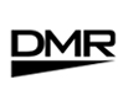DMR
Digital Mobile Radio (DMR) is a popular digital communication standard used in amateur radio. It offers several advantages over traditional analog systems, such as improved audio quality, better spectrum efficiency, and enhanced features like text messaging and GPS tracking. DMR operates on two-slot Time Division Multiple Access (TDMA), which allows two simultaneous conversations on a single frequency, effectively doubling the capacity of the radio spectrum. This makes it an attractive option for amateur radio operators who want to make the most of their available frequencies.
One of the key features of DMR is its ability to connect users across the globe through a network of repeaters and internet gateways. This is made possible by the DMR-MARC (Motorola Amateur Radio Club) network and other similar networks that link repeaters worldwide. By using a DMR radio, amateur operators can communicate with other operators in different countries, participate in global nets, and even access specialized talk groups focused on specific interests or regions. This global connectivity has made DMR a popular choice for amateur radio enthusiasts who enjoy making contacts with operators from around the world.
Another significant aspect of DMR is its robust and flexible infrastructure. DMR radios are available from various manufacturers, offering a wide range of features and price points to suit different needs and budgets. Additionally, the DMR standard is open, meaning that any manufacturer can produce compatible equipment, fostering competition and innovation in the market. This has led to a diverse ecosystem of DMR radios, repeaters, and accessories, making it easier for amateur radio operators to find the right equipment for their needs. The combination of advanced features, global connectivity, and a thriving market has solidified DMR’s place as a leading digital communication standard in the amateur radio community.
Website: What is DMR - Motorola Solutions EMEA

VE3GPR